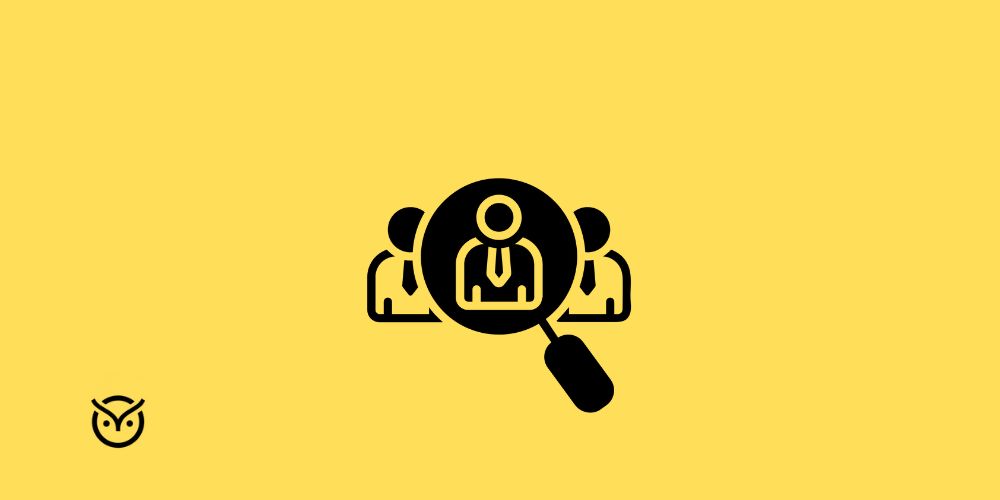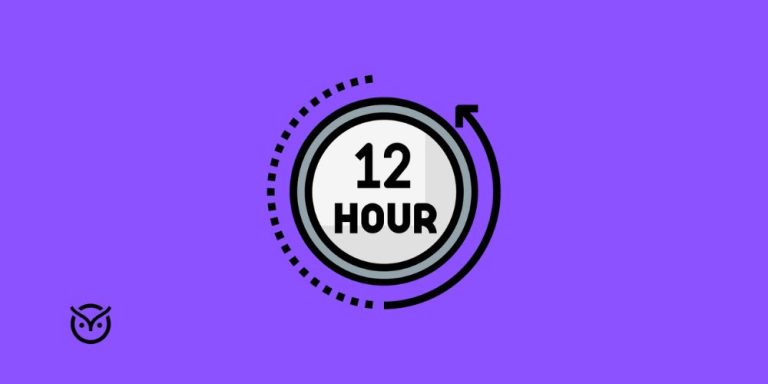Pre Screening Process for Employment Explained: What Job Seekers Should Expect

TL;DR
- Pre screening process for employment filters candidates early.
- Includes pre-employment screening checks like verification, tests, and short interviews.
- 95% of U.S. employers and 93% globally use screening.
- Expect checks on history, education, and online presence.
- Prep for screening interview questions and keep records ready.
You send out applications, polish your resume, and finally get a call. But instead of jumping straight into a full interview, you’re told there’s a pre screening process for employment. For many job seekers, this stage feels like a mysterious middle ground, like are you being tested, or just filtered out?
The good news is that pre-screening isn’t designed to trap you. It’s there to ensure you’re the right fit and to save both sides from wasted time. This blog will break down the process of screening, explain what employers are really looking for, and share practical tips so you know how to prepare and stand out in the talent acquisition process.
What Is the Pre-Screening Process in Employment?

The pre screening process for employment is the first layer of filtering in the methods of recruitment. It’s where employers make sure candidates meet the minimum requirements before committing to full interviews or job offers.
Think of it as a safeguard. Companies use pre employment screening checks to confirm your background, qualifications, and sometimes personality fit. Depending on the role and industry, pre-screening may include:
- Pre check employment verification, validating work and education history.
- Background checks, which may reveal an alternate name on the background check if you’ve used variations of your name.
- Pre hire tests, anything from coding challenges to personality assessments.
- Short calls or emails, where pre screening interview means asking quick questions to confirm availability, interest, and skills.
- Online research, including professional profiles or social media activity.
Some companies also run a preliminary screening step, where resumes are scanned automatically before a recruiter even looks at them. In fact, according to a global study, 95% of U.S. employers and 93% worldwide conduct some form of employment screening. That makes it clear: screening is the standard.
For candidates, understanding what is happening during this stage can remove much of the stress. Whether it’s clarifying the pre hire meaning, knowing how pre employment vetting works, or even asking “what does job screening mean,” being informed helps you stay confident.
What Is the Pre-Screening Process in Employment?
Walk through a quick, clickable simulation to see how pre-screening actually works.
Pre-Screening Complete
You’ve reached the shortlist. Next up: structured interviews with the hiring team.
Steps in the Pre-Screening Process

The pre screening process for employment varies by company, but most follow a similar set of steps.
1. Application Review
Start with your resume and cover letter. Recruiters or automated tools give your resume a first pass to see if it matches the basic job requirements. It works like an initial filter. If the key skills aren’t clearly shown, your application may stall at this stage.
2. Pre-Screening Interviews
Once your resume passes the first filter, you might get a quick call or email exchange. This is often what pre screening interview means in practice: short conversations where recruiters confirm your availability, interest, and whether your background aligns with the job. Expect a few direct screening interview questions, like your salary expectations, notice period, or willingness to relocate.
3. Pre-Hire Tests
More employers are bringing pre hire tests into their talent acquisition process. These can be skill challenges, personality checks, or problem-solving tasks. Around 76% of companies now use skill-based tests when hiring. The reason is clear: they want proof of how a candidate performs on the job, not just what’s listed on a resume.
4. Background Checks
Next comes verification. Employers may run pre employment screening checks to confirm your work history, education, and professional licenses. In some cases, they’ll run an alternate name on a background check if you’ve used different legal names. This stage also includes pre check employment verification, which ensures you’re being truthful about your employment timeline.
5. Reference and Social Media Review
While not always mandatory, many companies call your references during this phase. Some also review your professional online presence. Employers want to see consistency between your application and what’s publicly available. This step is part of modern pre employment vetting, where digital footprints matter.
6. HR or Hiring Manager Review
After the checks are complete, recruiters forward the selected candidates to the hiring manager for the next stage. At this point, the process of screening ends, and the formal interview stage begins.
Why Employers Use Pre-Screening

So, what is the main purpose of pre employment screening? Employers don’t do it to make your life difficult. They do it because it saves time, reduces risk, and ensures quality hires.
Reducing Hiring Risks
Bad hires are expensive. According to the U.S. Department of Labor, bringing in the wrong person can end up costing a business close to 30% of that worker’s first-year salary. That’s a huge risk. With pre employment vetting, companies minimize the chance of bringing in someone unqualified or dishonest.
Speeding Up the Talent Pipeline
When hundreds apply for one role, recruiters need efficiency. The pre screening process for employment helps them focus on the top candidates quickly. With methods of recruitment becoming more tech-driven, pre-screening ensures hiring managers spend time only on serious contenders.
Ensuring Compliance
Certain industries require strict verification. For example, healthcare, education, and finance often mandate background checks by law. Employers must define pre employment standards to avoid liability and protect customers, clients, and staff. In regulated industries, skipping pre-screening isn’t an option. It’s part of compliance.
Improving Candidate Fit
Beyond risk management, pre-screening also helps identify cultural and role fit. Asking what does a screening test for a job look like, the answer is simple: it measures whether you’ll succeed in the role not just whether you can do the tasks. This helps companies reduce turnover and improve employee satisfaction.
Why Employers Use Pre-Screening
Enter an annual salary to estimate the potential cost of a bad hire. Adjust the % if needed.
What Job Seekers Should Expect During Pre-Screening

From the candidate’s perspective, this stage can feel intimidating. But knowing what does job screening means for you personally makes it easier. Here’s what you can expect:
Quick Communication Checks
Recruiters may reach out by phone, email, or even text. Be ready for impromptu screening interview questions that test your professionalism and interest. These conversations are short but important as they set the tone for how you’ll be perceived.
Document Verification
Expect requests for past employment details, degrees, or certifications. If you have a unique case like a group 1 employment verification for healthcare jobs, you may need to provide additional documentation. Employers also double-check for inconsistencies such as preescreen corrections where small application errors need fixing.
Skills and Knowledge Tests
You might be asked to take pre hire or technical tests. These assessments can be practical, like coding tasks, or general, like personality questionnaires. Understanding the pre hire meaning here is crucial: it’s the stage where employers confirm your potential before investing more in interviews.
Background and Credit Checks
While not every company uses them, many employers include criminal, credit, or identity checks in pre employment screening checks. Knowing ahead of time what information will appear helps reduce surprises.
Online Profile Reviews
Modern pre employment vetting often extends to LinkedIn, portfolios, or other professional platforms. While employers can’t always use personal content legally, they may still notice red flags. Keeping your profiles clean, consistent, and updated is part of today’s talent acquisition process.
Next-Step Readiness
The biggest expectation? That you’re prepared to move forward. Employers want candidates who can progress smoothly from applicant screening to interviews without delays. Being organized with references, documents, and updated resumes helps you stand out.
What Job Seekers Should Expect During Pre-Screening
Read each situation and choose Pass or Fail. See why immediately, then view your score.
-
You list a different job title than your actual role to look senior.
-
You respond late to a recruiter’s pre-screening email and miss the requested time window.
-
You ace the pre hire test but ignore the follow-up questions sent the next day.
-
You confirm salary range and notice period during a short pre-screen call.
-
You flag a name change so an alternate name on background check won’t slow verification.
-
You remove employment dates from your resume so pre check employment verification is harder.
How to Prepare for Pre-Screening as a Candidate

Knowing the pre screening process for employment is one thing. Walking into it prepared is another. Here’s how to boost your chances of moving past this stage:
1. Clean Up Your Resume and Online Profiles
Before anything else, make sure your resume is polished and accurate. Employers may run a pre check employment verification, so ensure job titles, dates, and education match up. Inconsistent details are one of the top reasons candidates are flagged during pre employment vetting.
Your online presence matters too. Recruiters often look at LinkedIn or personal websites during applicant screening. Keep your profiles consistent, professional, and free of questionable content.
2. Prepare for Pre-Screening Interviews
When a recruiter reaches out, treat it like the first interview. Even if it’s a quick call, know how to answer screening interview questions about your salary expectations, career goals, and availability. Clear, confident answers show you’re serious about the role.
3. Practice for Pre-Hire Assessments
If the role requires pre hire tests, you can prepare ahead of time. Brush up on technical skills, practice logical reasoning exercises, or review personality-style quizzes. Knowing what is a screening test is for a job will give you an edge. Sites offering free practice tests can be useful for reducing nerves and increasing accuracy.
4. Double-Check Your Documents
Be ready to supply references, diplomas, or licenses if requested. Mistakes happen, sometimes called pre screen corrections, but being organized prevents unnecessary delays. If your name has changed, clarify in advance so an alternate name on background check won’t confuse results.
5. Have Questions Ready
Remember, screening goes both ways. Use this time to ask about the role, team culture, and next steps in the talent acquisition process. Showing curiosity demonstrates genuine interest.
Common Misconceptions About Pre-Screening

Even though it’s a common stage in the process of screening, many job seekers have misconceptions that can cause unnecessary stress. Let’s clear them up:
“Pre-Screening Means I Got the Job”
Not quite. A pre screening interview means you’re being considered, but it’s still early. Passing screening is necessary, but it doesn’t guarantee you’ll be hired.
“Pre-Screening Is Just Paperwork”
It’s more than paperwork. Employers actively assess your skills, communication style, and honesty. For example, failing a pre hire meaning test of aptitude or providing inconsistent details could end your application.
“Only Certain Companies Do Pre-Screening”
Actually, almost every company uses some form of pre employment screening checks whether formal tests, phone interviews, or reference calls. The type may vary, but screening itself is nearly universal.
“Background Checks Are Always Negative”
Background checks aren’t designed to disqualify; they’re meant to confirm. An alternate name on background check doesn’t automatically raise concerns because it simply ensures accuracy. Many employers simply want to confirm your history matches what you’ve shared.
“I Can’t Influence the Process”
Wrong. You can prepare. By answering screening interview questions clearly, organizing your documents and aligning your resume with role requirements, you actively improve your odds.
Conclusion
The pre screening process for employment might seem like an obstacle, but it works as a checkpoint that helps both employers and candidates. For companies, it lowers the chances of a bad hire and makes hiring faster. For applicants, it’s an early opportunity to show value beyond what’s written on a resume. With strong preparation, clear documents, and confidence during tests, you put yourself closer to securing the role you’re aiming for.
FAQs
Not all, but the majority do. Even small businesses often run basic pre employment screening checks like reference calls or quick phone interviews. Larger companies, especially in regulated industries, almost always include them.
Yes. Being qualified on paper doesn’t guarantee you’ll pass the process of screening. Poor communication, inconsistent records, or failing a pre hire test can hold you back. Preparing properly helps avoid this.






